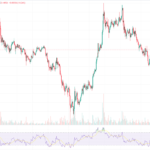Have you ever found yourself lost in a sea of stock charts, wondering how experts seem to predict market trends with uncanny accuracy? If so, fear not, for the world of technical analysis is here to unveil its secrets to you. In this comprehensive beginner’s guide, we will embark on a journey through the intricate realm of market insights, armed with the powerful tool of technical analysis. As we delve into the depths of deciphering stock movements, you’ll discover that technical analysis is not just about reading graphs but a sophisticated art form that offers a window into the psyche of the market itself. By understanding the patterns, indicators, and signals hidden within price charts, you can gain a competitive edge in the tumultuous world of trading. So, fasten your seatbelt as we unravel the mysteries of technical analysis and equip you with the knowledge to navigate the turbulent waters of the financial markets with confidence and finesse.
What Is Technical Analysis?
Technical analysis is a method used by traders and investors to evaluate securities and forecast future price movements. It involves studying historical market data, such as price and volume, to identify patterns and trends that can help predict future market behavior. Unlike fundamental analysis, which focuses on the intrinsic value of an asset, technical analysis is primarily concerned with analyzing price charts and using various indicators to make trading decisions.
At its core, technical analysis operates on the assumption that historical price patterns tend to repeat themselves. By identifying these patterns, traders can anticipate potential market movements and adjust their strategies accordingly. This approach is based on the belief that market participants are influenced by emotions such as fear and greed, which manifest in predictable patterns on price charts.
Understanding Technical Analysis
To effectively utilize technical analysis, it’s crucial to understand the key concepts and principles that underpin this methodology. One of the foundational elements of technical analysis is the notion of support and resistance levels. Support refers to a price level at which buying pressure tends to outweigh selling pressure, causing prices to bounce back up. Resistance, on the other hand, represents a level at which selling pressure exceeds buying pressure, leading prices to reverse their upward momentum.
In addition to support and resistance levels, technical analysts also rely on chart patterns for insights into market sentiment. These patterns are formed by recurring shapes or formations on price charts and can provide valuable clues about potential trend reversals or continuations. Some common chart patterns include head and shoulders, double tops or bottoms, triangles, and flags.
Using Technical Analysis
Once you have a solid understanding of technical analysis concepts like support/resistance levels and chart patterns, you can begin applying this knowledge in your trading decisions. One popular tool used in technical analysis is moving averages (MA). Moving averages smooth out price fluctuations and help identify the overall trend direction. Traders often use the crossover of different moving averages as a signal to enter or exit trades.
Another widely used indicator is the relative strength index (RSI), which measures the speed and change of price movements. The RSI ranges from 0 to 100 and is typically used to identify overbought or oversold conditions in the market. When the RSI reaches extreme levels, it may indicate a potential reversal in price.
Technical Analysis Indicators
In addition to moving averages and the RSI, there are numerous other technical analysis indicators available to traders. These include stochastic oscillators, MACD (moving average convergence divergence), Bollinger Bands, and Fibonacci retracement levels. Each indicator provides unique insights into market dynamics and can be used in combination with others to enhance trading strategies.
Underlying Assumptions of Technical Analysis
Technical analysis is based on several key assumptions that guide its principles and methodologies. Firstly, it assumes that market prices reflect all available information about an asset. This means that fundamental factors such as company earnings or economic data are already incorporated into the price.
Secondly, technical analysis assumes that historical price patterns tend to repeat themselves due to human psychology and market behavior. Traders believe that certain patterns have proven to be reliable indicators of future price movements.
Technical Analysis vs. Fundamental Analysis
While both technical analysis and fundamental analysis aim to evaluate securities, they differ in their approaches and focus areas. Fundamental analysis involves assessing a company’s financial health, management team, competitive advantages, industry trends, and other factors that may impact its value over time.
In contrast, technical analysis disregards these fundamental factors and instead focuses solely on price charts and historical data. Technical analysts believe that all relevant information is already reflected in the price, making it unnecessary to consider external factors.
Limitations of Technical Analysis
While technical analysis can be a valuable tool for traders, it’s important to recognize its limitations. One of the main criticisms of technical analysis is that it relies on historical data, which may not always accurately predict future market movements.
In addition, technical analysis does not account for unexpected events or news that can significantly impact market dynamics. It’s essential to combine technical analysis with other forms of analysis and stay informed about current events that may affect the markets.
Chartered Market Technician (CMT)
The Chartered Market Technician (CMT) designation is a professional certification for individuals who specialize in technical analysis. The CMT program provides a comprehensive curriculum covering various aspects of technical analysis, including charting techniques, indicators, and risk management strategies.
Earning the CMT designation demonstrates a high level of proficiency in technical analysis and can enhance career prospects in the field of finance and trading.
What Assumptions Do Technical Analysts Make?
Technical analysts make several assumptions when using this methodology. Firstly, they assume that market prices follow trends and tend to move in recognizable patterns. By identifying these patterns, analysts believe they can predict future price movements with a certain degree of accuracy.
Secondly, technical analysts assume that historical price patterns will repeat themselves due to human psychology and market behavior. They believe that fear and greed drive market participants’ decision-making processes, leading to predictable patterns on price charts.
What’s the Difference Between Fundamental and Technical Analysis?
The main difference between fundamental and technical analysis lies in their approaches to evaluating securities. Fundamental analysis focuses on factors such as a company’s financial health, management team, competitive advantages, and industry trends to determine its intrinsic value.
On the other hand, technical analysis disregards these fundamental factors and instead relies solely on price charts and historical data. Technical analysts believe that all relevant information is already reflected in the price and can be analyzed to predict future market movements.
How Can I Learn Technical Analysis?
If you’re interested in learning technical analysis, there are several resources available to help you get started. Online courses, books, and tutorials can provide a solid foundation in technical analysis principles and methodologies.
Additionally, joining trading communities or attending seminars and workshops can offer valuable insights from experienced traders. Practice is also essential in honing your technical analysis skills. Analyzing historical price charts, identifying patterns, and testing different indicators can help you develop a deeper understanding of this methodology.
The Foundation of Technical Analysis: Understanding Price Charts
Price charts are the primary tool used in technical analysis. They provide a visual representation of an asset’s historical price movements over time. By analyzing these charts, traders can identify patterns and trends that may indicate future market behavior.
There are several types of price charts commonly used in technical analysis, including line charts, bar charts, and candlestick charts. Each chart type has its own advantages and provides different levels of detail about price movements.
Identifying Trends: The Key to Market Predictions
Trend identification is a crucial aspect of technical analysis as it helps traders anticipate potential market movements. Trends can be classified into three categories: uptrend (higher highs and higher lows), downtrend (lower highs and lower lows), or sideways (no clear direction).
To identify trends accurately, traders often use trendlines drawn on price charts. Trendlines connect consecutive highs or lows and provide a visual representation of the trend’s direction. Breakouts above or below trendlines can signal potential trend reversals or continuations.
Support and Resistance Levels: Building Blocks of Market Analysis
Support and resistance levels are key concepts in technical analysis. Support represents a price level at which buying pressure outweighs selling pressure, causing prices to bounce back up. Resistance, on the other hand, refers to a level at which selling pressure exceeds buying pressure, leading prices to reverse their upward momentum.
Traders often use support and resistance levels as reference points for making trading decisions. When prices approach these levels, they may either reverse or break through them, providing opportunities for entering or exiting trades.
Chart Patterns: Unveiling Market Sentiments
Chart patterns are recurring shapes or formations that appear on price charts and can provide insights into market sentiment. These patterns are formed by the collective actions of market participants and can indicate potential trend reversals or continuations.
Some common chart patterns include head and shoulders, double tops or bottoms, triangles, flags, and wedges. Traders analyze these patterns to anticipate future price movements and adjust their strategies accordingly.
Oscillators and Indicators: Tools for Evaluating Market Momentum
Oscillators and indicators are mathematical calculations applied to price data to evaluate market momentum. These tools help traders identify overbought or oversold conditions in the market and anticipate potential reversals in price.
Popular oscillators include the relative strength index (RSI), stochastic oscillator, and moving average convergence divergence (MACD). Each oscillator has its own interpretation guidelines that traders use to generate trading signals.
Moving Averages: Smoothing Out Price Fluctuations
Moving averages (MA) are widely used in technical analysis to smooth out price fluctuations and identify the overall trend direction. A moving average is calculated by averaging a specified number of past price points and plotting the result on a chart.
Traders often use different combinations of moving averages to generate trading signals. For example, a crossover of the shorter-term moving average above the longer-term moving average may indicate a bullish signal, while a crossover below may suggest a bearish signal.
Fibonacci Retracement: Unlocking Hidden Levels of Support and Resistance
Fibonacci retracement levels are based on the mathematical sequence discovered by Leonardo Fibonacci. These levels are used to identify potential support and resistance levels that may not be apparent on regular price charts.
Traders apply Fibonacci retracement levels to significant price swings and use them as reference points for potential market reversals or continuations. The most commonly used Fibonacci retracement levels are 38.2%, 50%, and 61.8%.
Risk Management Strategies in Technical Analysis
Risk management is an essential aspect of trading, regardless of the analysis methodology used. In technical analysis, traders employ various strategies to manage risk and protect their capital.
One common risk management technique is setting stop-loss orders, which automatically exit trades if prices move against expectations. Traders also use position sizing techniques to determine how much capital to allocate to each trade based on their risk tolerance.
Putting It All Together: Developing Your Trading Plan
To effectively utilize technical analysis in your trading, it’s crucial to develop a well-defined trading plan. A trading plan outlines your strategy, including entry and exit criteria, risk management guidelines, and overall goals.
By following a trading plan, you can maintain discipline and consistency in your trading decisions. Regularly reviewing and adjusting your plan based on market conditions can help improve your trading performance over time.
Conclusion: Mastering Market Insights Through Technical Analysis
In conclusion, technical analysis is a powerful tool that can provide valuable insights into market behavior and help traders make informed decisions. By understanding the underlying principles of technical analysis, such as support/resistance levels, chart patterns, and indicators, you can gain a competitive edge in the financial markets.
Remember that technical analysis is not foolproof and should be used in conjunction with other forms of analysis. It’s essential to stay informed about current events and continuously refine your skills through practice and learning. With dedication and perseverance, you can master the art of technical analysis and unlock the secrets of market insights.












